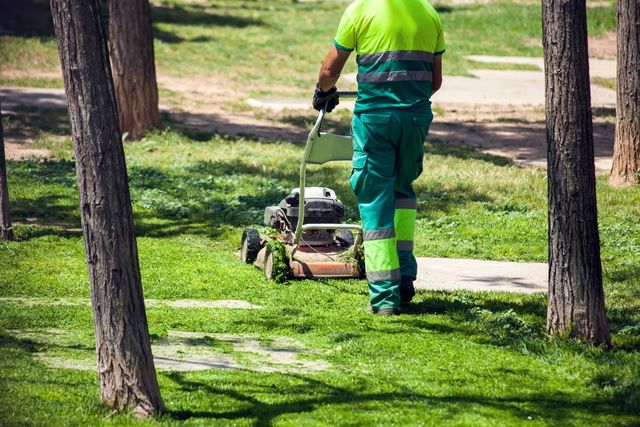Preparing Your Lawn for Winter: A Survival Guide

A vibrant, green lawn doesn’t just vanish when winter sets in—it shifts into survival mode. As temperatures drop, most grasses enter a dormant phase, a natural pause where growth slows or halts, often causing lawns to brown. This isn’t a sign of death; rather, your grass is conserving energy to emerge lush and healthy come spring. How you ready your lawn for this dormancy period directly impacts its ability to recover. Neglecting proper care can lead to sparse patches, weed invasion, or disease outbreaks in the warmer months. Conversely, following the right preparation steps ensures a seamless seasonal change and a thriving lawn.
This guide walks you through everything needed to get your lawn winter-ready—from late-season mowing and fertilizing to aeration, weed management, and protective measures.
Understanding Dormancy
Dormancy acts as your lawn’s natural defense system. During this time, grass growth visibly slows or stops, redirecting energy to strengthen roots against freezing conditions. Cool-season grasses like Kentucky bluegrass, fescue, and ryegrass tend to stay green longer but still significantly reduce growth in winter. Warm-season varieties such as Bermuda, zoysia, and St. Augustine enter full dormancy, often turning brown until spring returns. Identifying your grass type is key to timing your winter preparations effectively.
Step 1: Final Mowing of the Season
- Gradually Lower Mowing Height: In the last two to three cuts, reduce blade height progressively. Aim for about 2 to 2.5 inches for cool-season grasses and slightly taller—2.5 to 3 inches—for warm-season types.
- Why It Matters: Grass left too long can mat under snow, fostering mold and disease, while cutting too short exposes roots to harsh cold.
- Pro Tip: Use sharp mower blades to ensure clean cuts, minimizing stress as your lawn enters dormancy.
Step 2: Fall Fertilization
- Choose a Winterizing Fertilizer: Opt for formulas rich in potassium to bolster root strength and enhance cold tolerance.
- Timing Is Crucial: Apply fertilizer late in the fall, roughly two to three weeks before the ground freezes.
- Benefits: This feeds your lawn’s root system, building energy reserves for winter and encouraging early spring growth.
Step 3: Aeration Before Winter
- Why Aerate: Compacted soil blocks water, nutrients, and oxygen from reaching roots. Aeration loosens the soil, improving absorption and reducing thatch.
- When to Aerate: Early to mid-fall suits cool-season grasses best, while warm-season grasses benefit from aeration in late summer or early fall.
- Outcome: Stronger roots better equipped to endure winter’s challenges.
Step 4: Overseeding Sparse Spots
- While dormant lawns pause growth, seeds sown in fall can germinate before cold fully sets in.
- Cool-season grasses especially gain from fall overseeding, helping fill in thin areas and promoting a denser lawn next spring.
Lawn Care Steps for Fall and Winter Preparation

Overseeding:
- Fill in any bare patches and boost lawn density to keep weeds at bay come spring.
- Maintain light, consistent watering until new grass seedlings are well established.
Step 5: Managing Weeds and Pests
- Weeds often remain active longer than grass, competing for nutrients as the lawn prepares for dormancy.
- Use a Pre-Emergent Herbicide to block winter annual weeds such as poa annua and chickweed.
- Spot-treat stubborn weeds like dandelions and clover before they enter dormancy.
- Inspect for pests like grubs, which can harm roots before winter; apply grub control treatments in early fall if needed.
Step 6: Clearing Debris
- Leaves, twigs, and other debris left on the lawn can suffocate grass and foster mold and pests.
- Rake leaves regularly throughout the fall rather than waiting for all to drop.
- Use a mulching mower to shred leaves finely, returning valuable organic matter to the soil.
- Remove heavy objects such as lawn furniture and toys to prevent dead spots caused by pressure on dormant grass.
Step 7: Adjusting Watering Practices
- As temperatures cool, reduce watering frequency but ensure soil remains moist until it freezes.
- Water deeply in late fall to help roots enter dormancy well hydrated.
- Drain and shut off irrigation systems before freezing weather to avoid damage.
Step 8: Protecting Your Lawn from Winter Stress
- Limit foot traffic on dormant grass, especially when frosted, to prevent damage to brittle blades.
- Remove thick snow accumulations when possible to reduce the risk of snow mold.
- Mark driveways and pathways clearly to avoid accidental damage from snow removal equipment.
Step 9: Lawn Equipment Maintenance
- Prepare your tools for winter storage to ensure they’re ready for spring.
- Clean and sharpen mower blades to prevent rust and promote clean cuts next season.
- Empty fuel tanks or add stabilizers to protect engines from old fuel damage.
- Store aerators, rakes, and trimmers in a clean, dry place.
Common Pitfalls to Avoid:
- Cutting grass too short, which exposes roots and increases risk of winter damage.
- Overfertilizing late in the season, which encourages leaf growth over root development.
- Neglecting leaf removal, leading to suffocated grass and fungal issues.
- Skipping aeration, which causes soil compaction and limits nutrient uptake during dormancy.
Quick Fall Lawn Prep Checklist:
- Gradually lower mowing height
- Apply potassium-rich fall fertilizer
- Aerate and overseed as needed
- Control weeds and pests
- Rake and mulch leaves
- Deep water before soil freezes
- Minimize winter foot traffic
- Service and store lawn equipment properly
Conclusion:
Winter dormancy is a vital rest phase for your lawn, not its end. Proper fall care helps your grass withstand winter’s challenges and thrive when spring arrives.
By implementing effective mowing, fertilizing, aerating, overseeding, and protective measures, your lawn can do more than just endure the winter chill—it can flourish when spring arrives. A bit of thoughtful seasonal care transforms a lawn from fragile and stressed into one that’s robust and primed for vibrant growth.
- Winter Dormancy Basics: Grass slows growth to conserve energy; cool-season grasses stay green longer, warm-season grasses turn brown.
- Know Your Grass Type: Determines timing and methods for winter preparation.
- Final Mowing: Gradually lower blade height to 2–2.5 inches (cool-season) or 2.5–3 inches (warm-season); use sharp blades to prevent stress.
- Fall Fertilization: Apply potassium-rich winterizing fertilizer 2–3 weeks before ground freezes to strengthen roots.
- Aeration: Loosen soil in early to mid-fall (cool-season) or late summer/early fall (warm-season) to improve root health.
- Overseeding: Plant seeds in fall to fill thin spots and prevent weeds; water consistently until established.
- Weed and Pest Control: Use pre-emergent herbicides and treat persistent weeds; check for grubs and apply control if needed.
- Debris Removal: Rake leaves weekly, mulch leaves into soil, and clear lawn furniture to prevent mold and dead spots.
- Watering Adjustments: Deep water before freeze; shut down irrigation to avoid damage.
- Winter Protection: Minimize foot traffic, clear snow piles, and mark paths to prevent damage and snow mold.
- Equipment Maintenance: Clean and sharpen mower blades, empty fuel tanks, and store tools properly.
- Common Mistakes: Avoid cutting grass too short, overfertilizing, neglecting leaf removal, and skipping aeration.
- Quick Prep Checklist: Lower mowing height, fertilize, aerate/overseed, control weeds/pests, rake leaves, deep water, minimize traffic, maintain equipment.
- Conclusion: Proper fall care ensures lawn survival and vigor in spring, turning dormancy into a recovery phase for a healthy comeback.